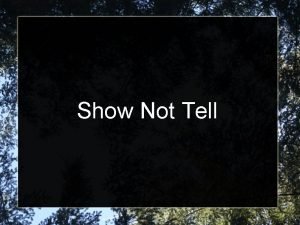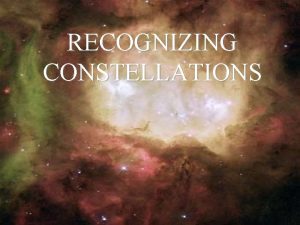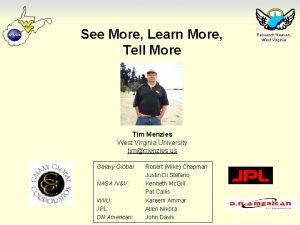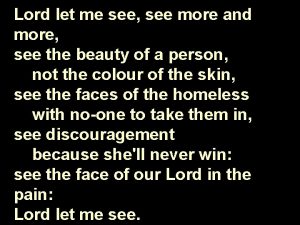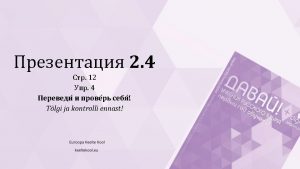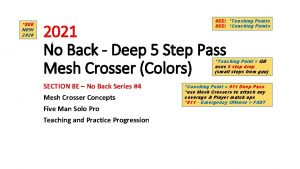See More Learn More Tell More year 2








- Slides: 8

See More, Learn More, Tell More (year 2: 2004) Tim Menzies West Virginia University tim@menzies. us Galaxy Global: Robert (Mike) Chapman Justin Di Stefano Research Heaven, West Virginia

Problem Research Heaven, West Virginia • We have many do-ings – But what are we learn-ing? • What general lessons about software quality assurance can we offer NASA? • Problem of external validity – It worked “there” but will it work “here”? • Mountains of data – Seek “the pearls in the dust” 2

Hypothesis 1. NASA SARP sees enough projects to let us make externally valid conclusions • 2. Sometimes! Those conclusions are useful • 3. Research Heaven, West Virginia YES! Those conclusions can be found via data mining methods • • • Well… Standard data miners can get too clever Often, simpler methods suffice 3

Approach • while not (( end of time OR end of money )) – – • • • Research Heaven, West Virginia chase data sets extract cost-benefit patterns from data check the stability of those patterns report stable conclusions Process metrics: cost estimation data from JPL Product metrics: NASA metric’s data program What else: go to SAS, beg for data Cost method 1 method 2 method 3 Faults found 4

Importance/ Benefits Research Heaven, West Virginia Specifically#1: • better cost estimation • Generally: –NASA does a lot of software –What guidance should we offer developers? –How good is that guidance CLCS • Has that guidance been certified? • Do we know how general are those guidelines? So many tools… Stop telling Me that “it” worked, once Specifically#2: • cost- effective defect detectors • based on static code measures Tell me how often it will work 5

Relevance To NASA Research Heaven, West Virginia • Data comes from NASA – Process metrics – Product metrics • Conclusions apply to NASA projects 6

Accomplishments • • Research Heaven, West Virginia Can demonstrate conclusions stable across multiple NASA projects Process conclusions – Accurate cost-estimation: after only 12 projects – ? ? better than prior state-of-the-art • PRED(30) = 69% – For 69% of projects, – actual*0. 7 <= estimate <= actual*1. 30 • Product conclusions – Old news: static code measures can generate detect defectors – New news: prior pessimism concerning such detectors unfounded • some measures and some generators yield same conclusions across multiple NASA projects – Implications: can now tailor SQA methods • Mix and match SQA methods • Desired goals within available money Cost method 1 method 2 static code defect detectors Faults found 7

Next Steps Research Heaven, West Virginia • Data mining needs data – Got data? • Then meet your new best friend • Current plans – Data reduction experiments • Can we collect fewer process metrics and still do cost estimation? • Can we learn good defect detectors sooner? – Model-based metrics: Got data? • Can we learn defect detectors from reports of MATLAB inspections? • Can we learn how to speed up model checking? – Better static code detectors • Would “disjunctive learning” help us? 8
 Lirik lagu more more more we praise you
Lirik lagu more more more we praise you More more more i want more more more more we praise you
More more more i want more more more more we praise you The more you study the more you learn
The more you study the more you learn Revision techniques for kinesthetic learners
Revision techniques for kinesthetic learners Go and tell john what you have seen
Go and tell john what you have seen John 9 sermon outline
John 9 sermon outline Tell me what you eat and i shall tell you what you are
Tell me what you eat and i shall tell you what you are Show not tell feelings
Show not tell feelings What constellations can you see all year round
What constellations can you see all year round







